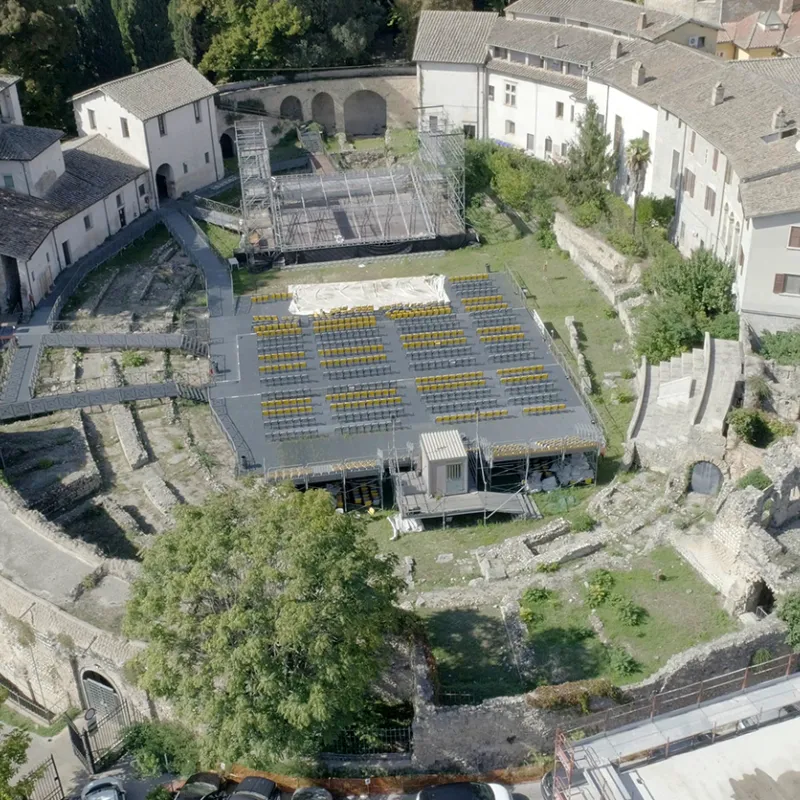10 things to see in Terni
The city of Terni, best known as the "city of steel," actually offers various attractions of considerable value.

They range from precious cultural heritage to breathtaking natural beauty, from work of human ingenuity rooted in the most remote epochs to contemporary architecture created from the projects of Ridolfi, Frankl and Bazzani, from references to the religious world to more earthly ones, consisting of good food and gastronomic specialties.
Just by stepping outside the city one finds other points of interest in the immediate vicinity: Carsulae, a mine of important finds from Roman times. The Marmore Falls, the highest waterfall in Europe, which offers a fascinating spectacle with paths that allow a safe approach to the froth and roar of the waters. Piediluco, a lake that seems to have been catapulted near Terni from the Alpine regions. Work, such as the Galleto power plant, is now considered among the most singular in industrial archaeology. Cesi, a medieval village rich in history and monuments connected to the mysterious archaeological site of Sant'Erasmo. The Valnerina of Terni with the slow flow of the river lapping medieval fortified villages.
Without being in any way exhaustive, we propose a list of ten essential stops to provide an overview of our city.
THE STAGES OF THE ITINERARY

One of the most significant pieces of evidence of the rich historical stratification of Terni and the most imposing preserved monument from the Roman era of the city, called Interamna, is the amphitheatre, of which remarkable remains can be admired near the Cathedral.

The Cathedral of Terni is dedicated to Santa Maria Assunta and its actual appearance is the result of the reconstruction work carried out between the 16th and 17th centuries. A local tradition that has never been verified attributes the project to Gianlorenzo Bernini.

The construction of the Church was undertaken in 1265. The original building had a nave with transept, in a Gothic style with ribbed cross vaults and a polygonal apse.

The church of San Salvatore, located in the small square of the same name, is a short distance from Palazzo Spada, the Town Hall of Terni. It is one of the oldest religious buildings in Terni, certainly the most impressive, whose origins date back to the early Middle Ages.

About three hundred towers were built in the city but by around 1600 very few were still standing. The best preserved, both then and now, is the Barbarasa tower.

It is known to everyone as Arnaldo Pomodoro’s obelisk, but its real name is the “Lance of Light” (Lancia di Luce). It is a modern symbol of Terni and depicts the evolution of the art of foundry from the raw iron of the base to the tip which looks like gold.

The Basilica of St Valentine is located about two kilometres from the centre of Terni, on the site of an ancient Christian cemetery, representing one of the most important examples of an early Christian necropolis in Umbria.

The Marmore Waterfall is created by the River Velino dropping down into the Nera River below, with a drop of 165 metres

Located at the southern end of Umbria, on the border with Lazio, nestled between the Luco and Caperno mountains, it is the largest lake in the region after Lake Trasimeno.

The city of Carsulae was probably founded around the end of the 3rd century BC, with the conclusion of the Romanisation of Umbria, which was followed by the construction of the western part of the Via Flaminia in 220 BC.